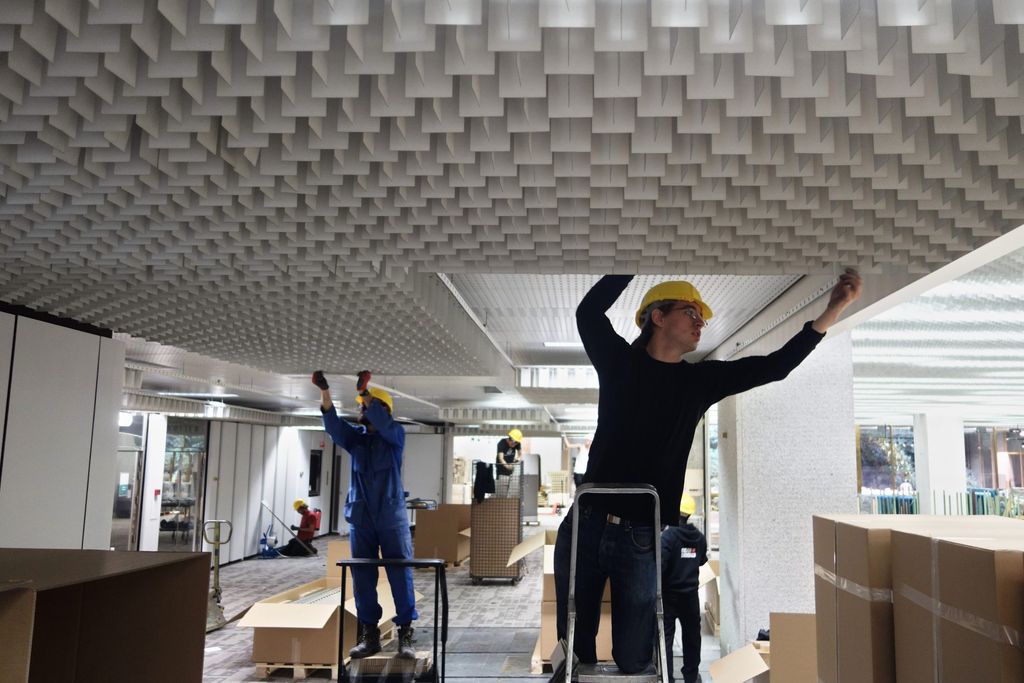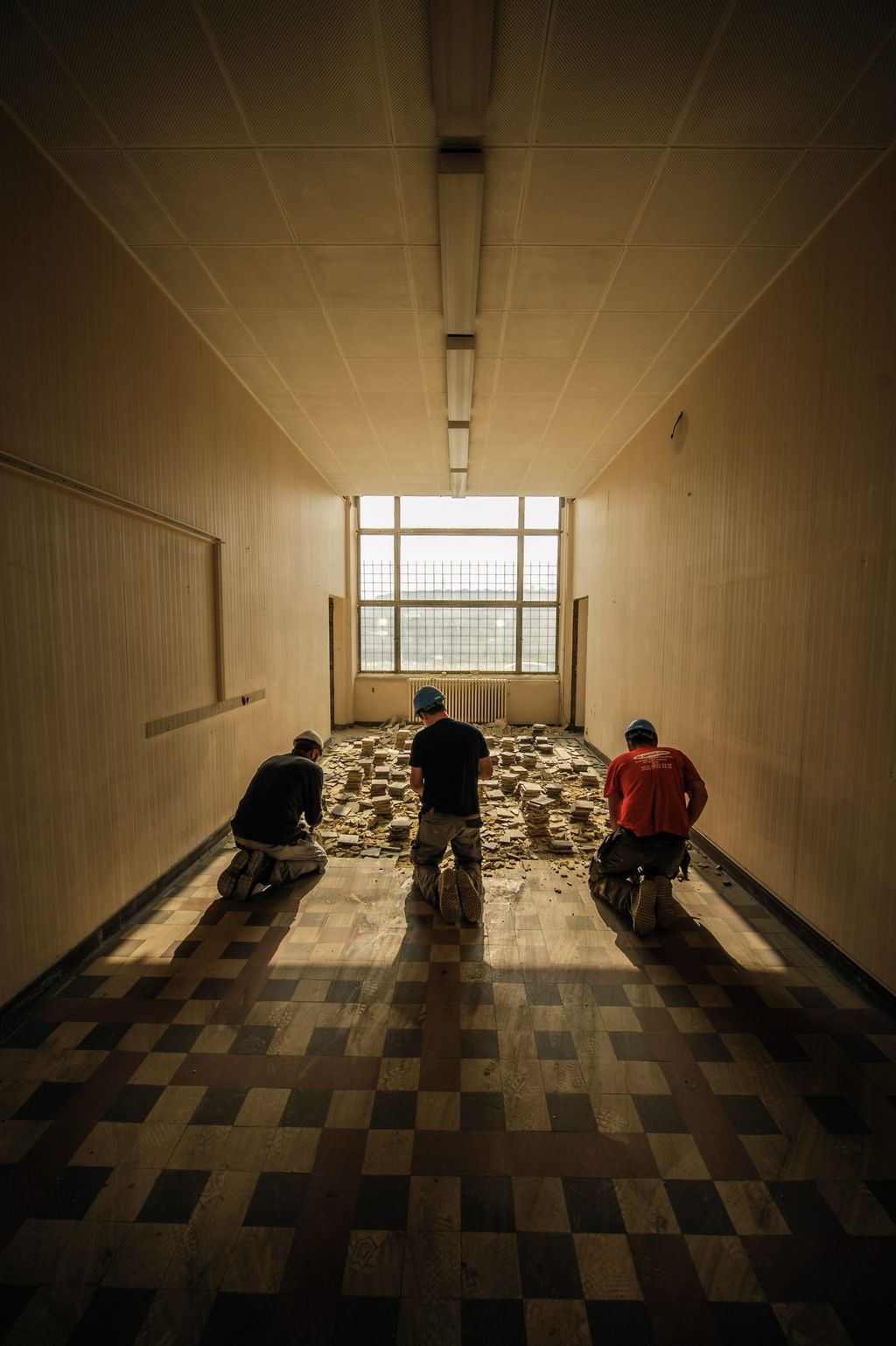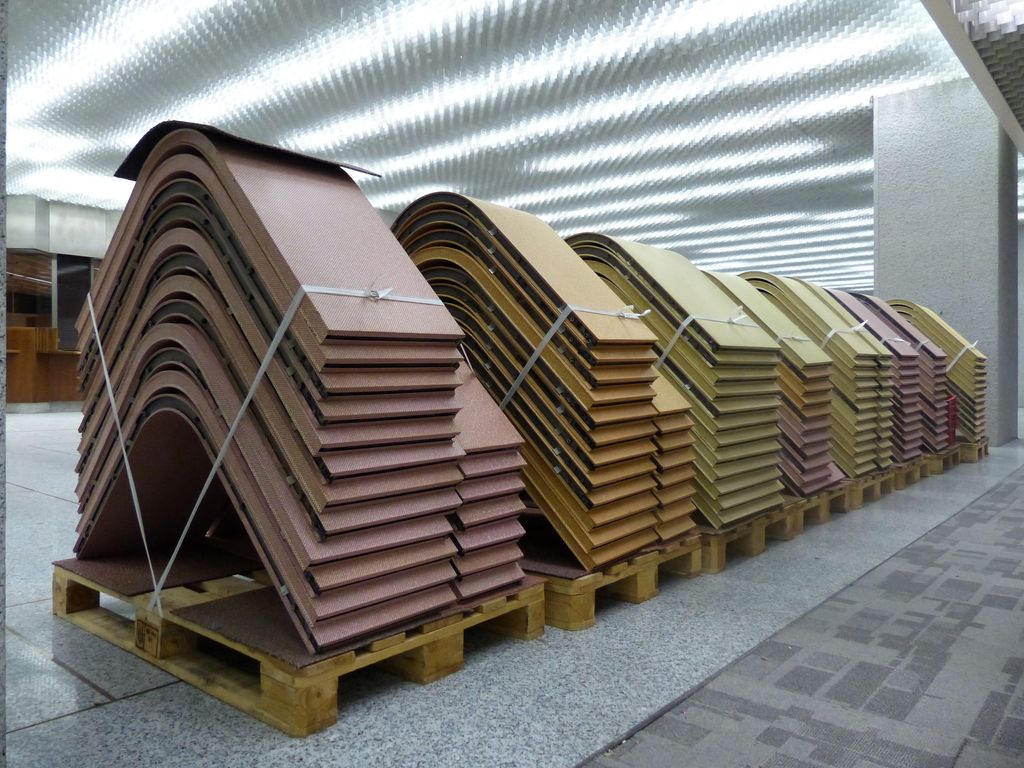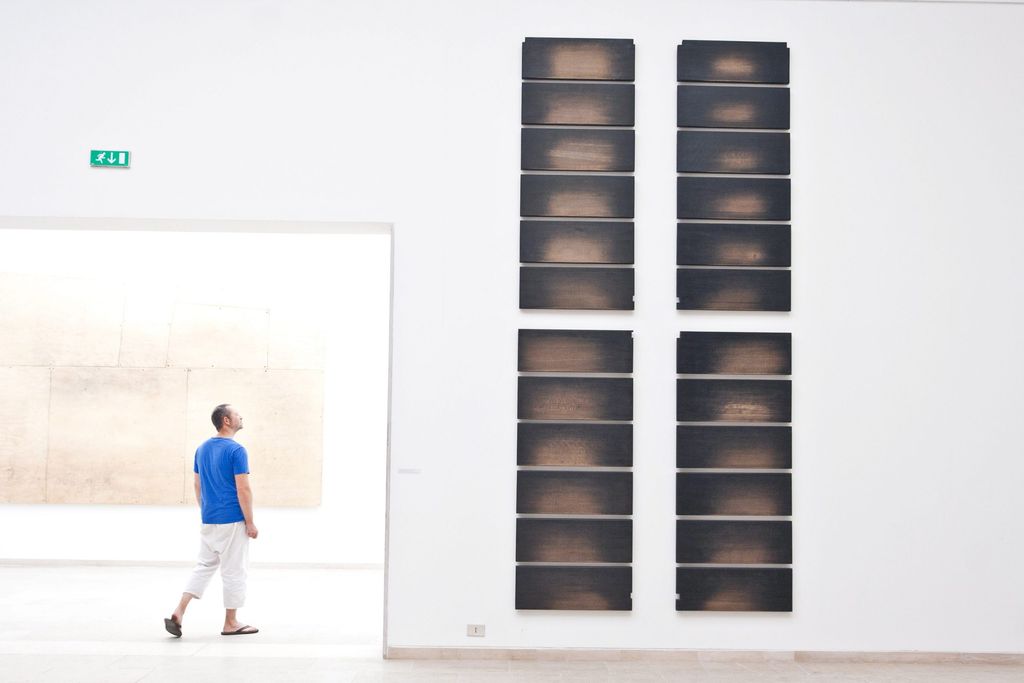
Complementing their interior architecture projects, Brussels-based collective Rotor develops exhibition concepts, publishes reference books and creates proposals relating to the new economic models in the material flow register of the building sector. In 2016, Rotor gave birth to RotorDC, a spin-off specialised in the dismantling and selling off of these re-usable materials. Lionel Devlieger, co-founder, drew the contours of its sphere of activity for us, while highlighting the participation of Rotor at the« Lille Métropole 2020 Capitale Mondiale du Design ».

Rotor and Rotor Deconstruction (DC) are both very much in the spirit of the times. Was this already the case when you started Rotor in 2005?
Our project came out of our indignation regarding the waste that we suspected occurred in the large-scale building material recycling sector. Of course, at the time, the concept of the circular economy didn’t yet exist. As we unravelled the system, we became aware that hiding behind all the big speeches about recycling were campaigns of mass destruction aimed at removing material in order to manufacture new material to replace it. In 2005, Flanders and Wallonia congratulated themselves on attaining a recycling treatment percentage for construction and demolition waste that was higher than the European directives. But in the field, in the sorting and collection centres we visited, the reality was quite different. The compaction strategies resulted in a very limited use for the recovered materials. Our commitment to the systematic re-use of materials such as cleaned bricks, tiles and marble, came out of this alarming observation.
You emphasise the idea of the collective, an equally in-vogue concept. Why is this central to your approach?
In our sphere of activity, namely the promotion of re-use, we needed various skills from the start. Having only the perspective of architects seemed very one-sided. The participation of bioengineers, economists, scenographers and lawyers allowed us to take a kaleidoscopic view of the issue and to provide a Swiss Army knife of solutions. We have shared goals. The idea of solidarity is also at the heart of our development strategy.

One of your projects with RotorDC focusses on the recuperation and re-use of ceramic tiles from buildings built in Brussels in the first half of the last century. With this type of project, what audience are you aiming for exactly in term of end-users?
Originally, we focused on the creative sector, so designers. We needed to offer them new sources of information and inspiration. Since 2008, with Rotor, we have therefore carried out numerous space design projects. The idea was to experiment, on the one hand, and to promote the results of our research to designers and interior architects on the other hand. At the national level, however, designers have limited impact on the use of materials. Hence our interest in reaching out to real estate developers, but also public sponsors and finally, through our Anderlecht store, private users who want to integrate into their home re-used parquet or 1950s glass lighting fixtures from an old, deserted office.

As part of Lille Métropole 2020, World Capital of Design, you are working on the Maison Poc, a project focused on the circular economy and situated in the former Poor Claires convent in Roubaix. For Rotor, what is the main interest of this type of activity?
It is both an experimental project and an information and promotional tool. I would characterise our approach as architectural acupuncture in the sense that we sought to add comfort in a spectacular but austere (i.e. cold in winter!) heritage space, with the most minimal possible intervention. During the festival, it will be a conference and exhibition venue. It will then house the Roubaix collective Zerm, which will manage the temporary usage of the premises for the next three years. We chose to delimit the space by designing a new retractable volume: in reality, an ultra-thin tent made of sail fabric. Our focus here isn’t so much re-use as ephemerisation, in order to obtain maximum impact with a minimum of means. The concept is to communicate on the idea of economy in design that, rather than being onerous, is an inspirational vector of change.

This type of project is a great international showcase, as are the awards you received in 2015: the Global Award for Sustainable Architecture and the Rotterdam Maaskant Prize 2015. Does the Rotor collective have international ambitions?
The essence of our approach is to maximise the practice of re-use in architecture and to operate where we have an impact. In this concept of local economy that we advocate, it would be stupid to want to run a dismantling project in Bilbao. In our deconstruction sites, we try to limit the movement of materials as much as possible. However, we are present abroad through other projects. We are the promoter of a project called FCRBE, supported by the European Interreg fund, which aims to facilitate the circulation of re-used items in northern Europe. We also share the results of our research by teaching on these topics in architecture and design schools in France, the Netherlands, Switzerland, the United States and the UK. For us, it is a question of helping to strengthen existing actions, and to give these actors of change strong tools for taking on the lobbies of the building materials manufacturers.
